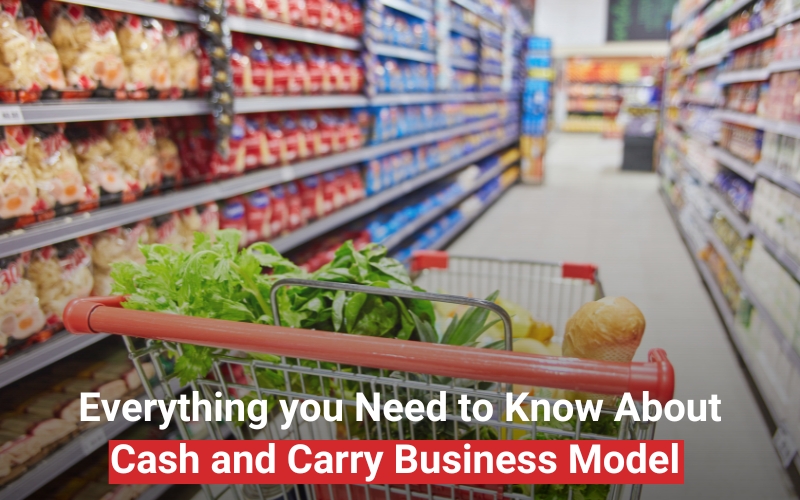Cash and carry is a type of business model that involves the sale of goods to customers who are typically business owners or operators, and who are required to pay for their purchases in cash at the time of purchase. In this model, the customer is responsible for transporting their own goods from the store to their place of business.
Cash-and-Carry Definition
Cash-and-Carry is a type of business model where customers pay for their purchases with cash or a debit card and then carry the items home themselves without the store providing any delivery service. In other words, you buy something from a store and take it with you instead of having it delivered to your home. This type of business is usually found in large warehouse stores, where customers can buy products in bulk at lower prices than they would find in traditional retail stores.
Why are companies showing their interest in this segment?
Companies may be interested in cash-and-carry trading for a variety of reasons, including:
- Hedging: Cash-and-carry trading can be used as a hedging strategy to reduce price risk. For example, if a company is exposed to price fluctuations in a particular commodity, it can use cash-and-carry trading to lock in a price and protect against losses.
- Speculation: Cash-and-carry trading can also be used for speculative purposes, where a company seeks to profit from temporary price discrepancies between the spot price and the futures price. This can be a lucrative trading strategy for companies with large amounts of capital and trading expertise.
- Diversification: Cash-and-carry trading can be a way for companies to diversify their investment portfolios. By investing in different types of assets and using different trading strategies, companies can reduce their overall investment risk.
- Income generation: Cash-and-carry trading can generate income for companies through the difference between the spot price and the futures price. This income can be used to finance other business activities or to reinvest in the company.
- Market access: Cash-and-carry trading provides companies with access to commodity markets that they may not otherwise be able to access. This can be particularly valuable for companies that are involved in the production or distribution of commodities.
Overall, cash-and-carry trading can provide companies with a range of benefits, from risk reduction to income generation to market access. However, it is important for companies to carefully assess the risks and potential rewards of this trading strategy before entering the market.
Important points to consider about the cash and carry business model
Here are some important points to consider when it comes to the cash and carry business model:
Target market:
The cash and carry business model is targeted at businesses that purchase goods in bulk, such as convenience stores, small retailers, restaurants, and other businesses. This model is not typically geared toward individual consumers, although some Cash and Carry Stores may allow individual customers to purchase goods in bulk as well.
Pricing:
The pricing in a cash and carry store is typically lower than what you would find at a traditional retail store, as the business model relies on volume sales to make a profit. The prices are also typically lower because there are no additional costs associated with delivery, packaging, or marketing, which are passed on to the customer in other retail models.
Payment:
Cash and carry stores require payment at the time of purchase, and typically do not offer credit to customers. This means that customers must have cash or a credit card on hand to make their purchases.
Products:
Cash and carry stores typically offer a wide range of products, including food and beverage items, household goods, office supplies, and other items that businesses might need to purchase in bulk. The products are often sold in large quantities, such as by the case or pallet, and may be sold at a discount compared to what you would find in a traditional retail store.
Convenience:
Cash and carry stores are designed to be quick and convenient for customers, with a focus on providing a fast and efficient shopping experience. Customers are typically able to browse and purchase products quickly and easily, without the need for assistance from sales staff.
Logistics:
Because customers are responsible for transporting their own goods from the store to their place of business, cash and carry stores are typically located in areas that are easily accessible by car or truck. The stores may also have loading docks or other features that make it easier for customers to load and transport their purchases.
The Future of Cash and Carry Trading
The future of cash-and-carry trading is uncertain, as it is dependent on various factors such as regulatory changes, market conditions, and technological advancements. However, here are a few trends that may shape the future of cash-and-carry trading:
- Increased automation: With the growth of algorithmic trading and advances in technology, cash-and-carry trading is becoming increasingly automated. This can lead to greater efficiency and lower transaction costs.
- Regulatory changes: Cash-and-carry trading is subject to regulatory oversight, and changes in regulations could impact the future of this trading strategy. For example, increased transparency requirements or higher capital requirements could make cash-and-carry trading less attractive for some companies.
- Market volatility: Cash-and-carry trading can be profitable in volatile markets, but it can also be risky. The future of cash-and-carry trading may depend on the level of volatility in commodity markets, as well as the ability of companies to manage risk effectively.
- ESG considerations: Environmental, social, and governance (ESG) factors are becoming increasingly important for investors, and may impact the future of cash-and-carry trading. For example, companies may be more likely to invest in commodities that are produced sustainably or to avoid commodities that have negative social or environmental impacts.
The future of cash-and-carry trading is likely to be shaped by a range of factors. Companies that are interested in cash-and-carry trading will need to carefully assess these factors in order to make informed investment decisions.
Read More: A Complete Guide to Fudge Cake, Strawberry Cheesecake & Vanilla Cheesecake
Conclusion:
Overall, the cash and carry business model is a popular choice for businesses that need to purchase goods in bulk, as it offers lower prices, a wide range of products, and a convenient shopping experience. However, it may not be the best choice for businesses that require credit terms or that do not have the ability to transport their own goods.










